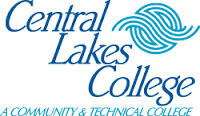What do they do?
Operate a variety of drills such as rotary, churn, and pneumatic to tap subsurface water and salt deposits, to remove core samples during mineral exploration or soil testing, and to facilitate the use of explosives in mining or construction. Includes horizontal and earth boring machine operators.
Also known as:
Blast Hole Driller, Diamond Driller, Drill Operator, Driller, Hard Rock Drill Operator, Highwall Drill Operator, Rock Drill Operator, Underground Drill Operator, Water Well Driller, Well Driller
-
3.9%
Change
Ranks #40 in job growth rate50Job Openings
Ranks #18 in net job growth
Looking for colleges that offer a specific major? Use the College Match Tool to find your best-matched schools and discover your estimated Net Price!
- High school diploma equivalent (54%)
- Less than high school diploma (20%)
- Some college, no degree (17%)
- Associate's degree (5%)
- Bachelor's degree (4%)
- Master's degree (<1%)
- Doctorate or Professional Degree (<1%)
People in this career often know a lot about:
- Mechanical - Knowledge of machines and tools, including their designs, uses, repair, and maintenance.
- Administration and Management - Knowledge of business and management principles involved in strategic planning, resource allocation, human resources modeling, leadership technique, production methods, and coordination of people and resources.
- Transportation - Knowledge of principles and methods for moving people or goods by air, rail, sea, or road, including the relative costs and benefits.
People in this career often have talent in:
- Control Precision - The ability to quickly and repeatedly adjust the controls of a machine or a vehicle to exact positions.
- Arm-Hand Steadiness - The ability to keep your hand and arm steady while moving your arm or while holding your arm and hand in one position.
- Multilimb Coordination - The ability to coordinate two or more limbs (for example, two arms, two legs, or one leg and one arm) while sitting, standing, or lying down. It does not involve performing the activities while the whole body is in motion.
- Reaction Time - The ability to quickly respond (with the hand, finger, or foot) to a signal (sound, light, picture) when it appears.
- Manual Dexterity - The ability to quickly move your hand, your hand together with your arm, or your two hands to grasp, manipulate, or assemble objects.
- Depth Perception - The ability to judge which of several objects is closer or farther away from you, or to judge the distance between you and an object.
- Rate Control - The ability to time your movements or the movement of a piece of equipment in anticipation of changes in the speed and/or direction of a moving object or scene.
- Near Vision - The ability to see details at close range (within a few feet of the observer).
- Perceptual Speed - The ability to quickly and accurately compare similarities and differences among sets of letters, numbers, objects, pictures, or patterns. The things to be compared may be presented at the same time or one after the other. This ability also includes comparing a presented object with a remembered object.
People in this career often do these activities:
- Fabricate parts or components.
- Operate drilling equipment.
- Pour materials into or on designated areas.
- Operate pumps or compressors.
- Select construction equipment.
- Install drilling equipment.
- Drive trucks or truck-mounted equipment.
- Develop equipment or component configurations.
- Remove debris or vegetation from work sites.
- Position construction or extraction equipment.
- Measure work site dimensions.
- Maintain drilling equipment.
- Record operational or environmental data.
- Assemble products or production equipment.
- Operate cranes, hoists, or other moving or lifting equipment.
- Review blueprints or specifications to determine work requirements.
- Determine appropriate locations for operations or installations.
- Drill holes in earth or rock.
- Inspect equipment or tools to be used in construction or excavation.
- Decontaminate equipment or sites to remove hazardous or toxic substances.
- Clean equipment or facilities.
- Prepare excavation or extraction sites for commissioning or decommissioning.
- Design energy production or management equipment or systems.
- Signal equipment operators to indicate proper equipment positioning.
- Collect geological samples.
This page includes data from:

 Occupation statistics: USDOL U.S. Bureau of Labor Statistics Occupational Employment Statistics
Occupation statistics: USDOL U.S. Bureau of Labor Statistics Occupational Employment Statistics





